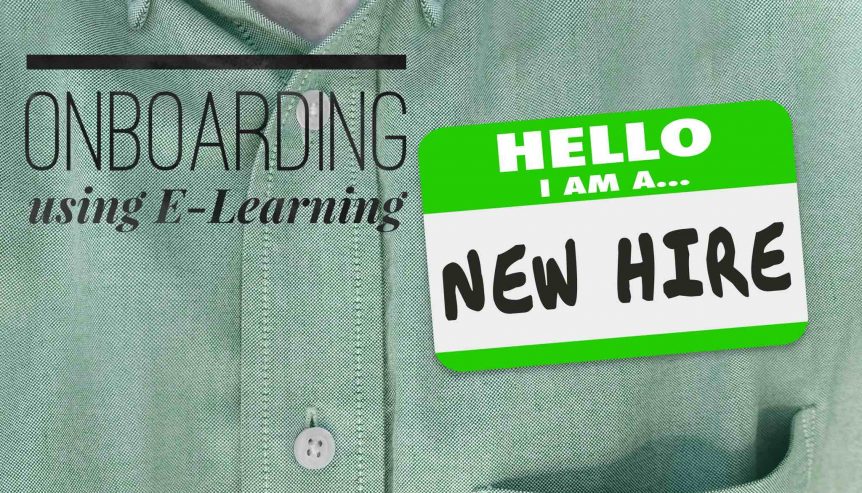Onboarding using E-Learning
Onboarding is a process that presents significant opportunities for many businesses in the UAE. Now, I know onboarding is not directly related to sales, your products, or service delivery. Many regard it as being an internal administrative process, but it is not just administrative. Instead, it gives you an opportunity to lay foundations for new employees so they can thrive as well as enthusing them, exciting them, and making them feel welcome. E-learning helps you achieve this.
Of course, you can’t use e-learning on its own. You still have to spend time with new employees face-to-face as it would be impersonal and disconcerting to have the whole onboarding process delivered electronically. The aim, instead, is to take a blended approach, using both face-to-face and e-learning to fully engage the new employee and create the best possible onboarding experience.
Benefits of E-Learning
- Creates the right initial impression – e-learning elements help you establish your brand and company values when new employees join.
- Gets new employees up to speed quickly – much of the onboarding process in many companies is ad hoc, where the employee picks up valuable information on the job, usually through observation or informal conversations with colleagues. This takes time, plus the employee might get inaccurate or incomplete information. E-learning, on the other hand, puts structure to the onboarding process at minimal expense, improving your bottom line. As employee turnover in UAE companies is sometimes high, this is particularly important.
- Cultural learning – this one is specific to organisations in the UAE as the vast majority of employees here are expatriates. To help those employees settle in properly, you need to make them aware of the cultural implications of living in a new country. E-learning lets you do this light-heartedly but also professionally.
- Improves employee engagement rates – e-learning is more interesting, fun, and relevant than other forms of learning (providing the modules and courses are professionally developed) so new employees are more likely to engage with it. This allows you to capitalise on the initial excitement and enthusiasm that all employees feel when starting a job in a new company.
- Creates a sense of belonging – with e-learning you can properly welcome new employees and make them feel like they are part of the team. This is often lost in the onboarding process leaving new starts feeling isolated.
- Improves retention rates – all of the above benefits will help improve your employee retention rate. This is important for all organisations, not least because retaining an employee is considerably cheaper than recruiting a new one.
- Easily scaled – e-learning courses are easy to scale across your organisation or as your organisation grows.
- Cost-effective – e-learning onboarding tools don’t cost more when operating in different offices or different countries, and there is no increase in delivery costs regardless of the number of recipients.
- Measurable – your HR department will have access to valuable information both on the employees individually, as well on your company’s overall recruitment and employee retention efforts.
- Easy to personalise – this means you can, for example, give a new sales employee a different onboarding experience and learning path to a new employee in operations.
- There when it’s needed – employees can refer back to the content as they go through their employment to refresh their memory or check something about a particular topic. This is particularly effective if employees can access courses on their mobile device.
- Easy to update – e-learning onboarding tools are easy and cost effective to change, update, and adapt according to the needs of the company.
- Consistent – so you can be sure every new employee gets the same onboarding experience.
What You Can Do with E-Learning Onboarding
The opportunities with e-learning are almost endless. You can include as much or as little information as you want, it can take whatever tone or style you need, and it can include multiple elements to improve its effectiveness. This includes video, quizzes, interactive activities, gamification elements, animations, and audio.
Here are some examples of what you can do with e-learning:
- Employee welcome – a video message from the CEO, an interactive tour of the workplace, and videos of existing employees talking about what it’s like working in the company. You can also include other information such as company strategy, company culture, and general cultural awareness information.
- Company policies – to provide employees with up-to-date information on things like dress code, getting paid, hours of work, IT information, and details on how to get IT support. It can also include an organisational chart with specific information relating to the employee’s supervisor/manager.
- Responsibilities and role – content specifically focused on the person’s job role with details on their responsibilities as well as relevant simulations and role play activities.
- Performance – details on how the performance review process works as well as information on the support that is available and the opportunities that exist in the company.
Onboarding is too important a process to leave to chance and the initiative of new employees. A blended approach with a significant e-learning element is the solution.
